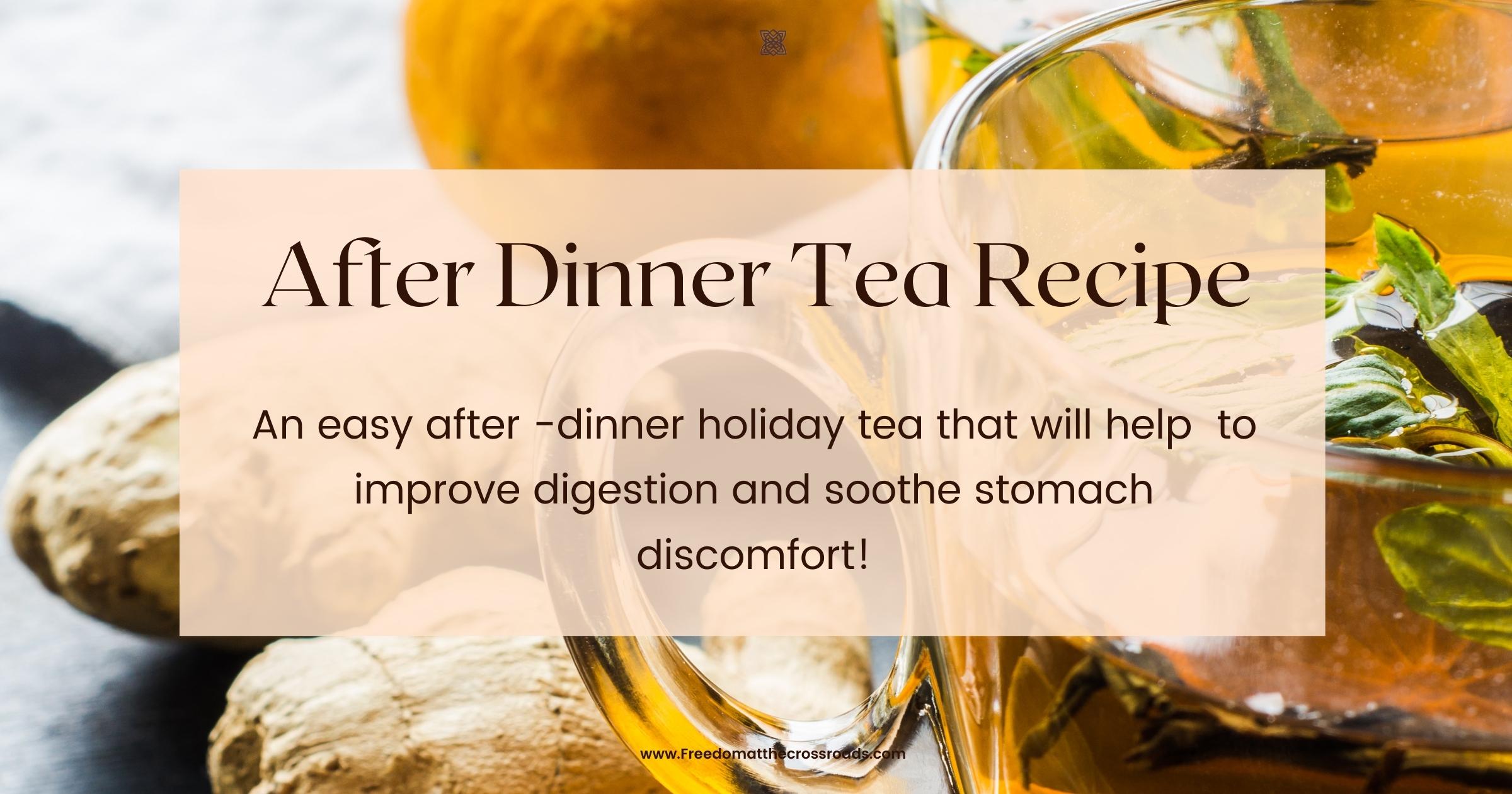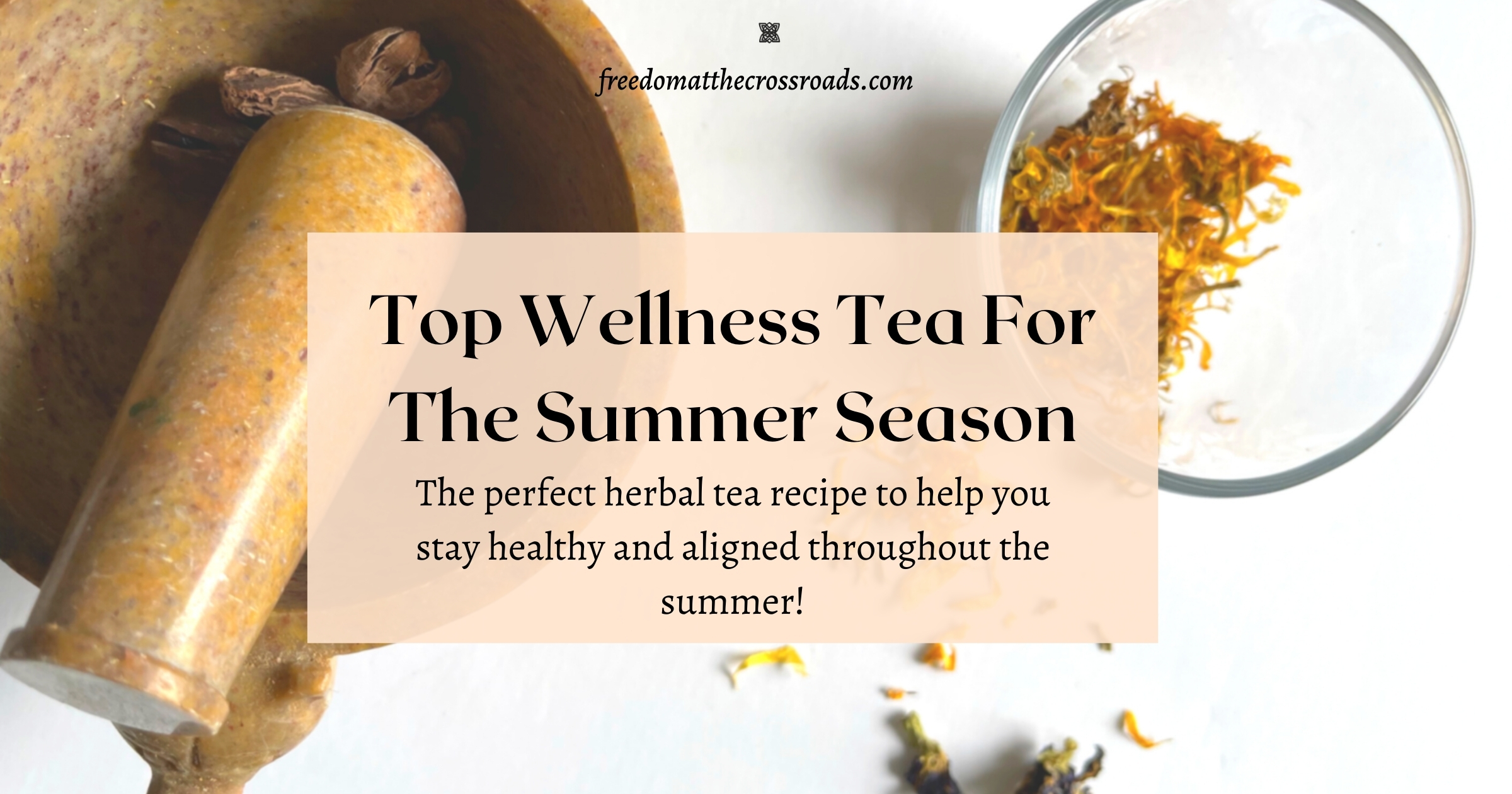A great after-dinner holiday tea (or tisane)
Happy holidays to everyone around the world and bon appetite! With all of the delicious dishes being served for the holidays, I can’t forget about drinks. My after dinner holiday tea recipe is a perfect way to end our holiday meal. For different parts of the world, the spices vary for this soothing beverage.
A brief history
For centuries, people have created beverages as accompaniments to their meals. This is especially true for the holiday and festival seasons. From parts of Africa, the middle and Asia, many drink after dinner teas on regular basis. In Victorian England, these were known as tisanes rather than tea. Tisanes are usually made from fresh or dried plant parts like leaves, flowers, crushed seeds, etc. As to whether or not other folks have their own after dinner holiday tea recipe, I’m guessing I’m not alone.
Health benefits of my after dinner tea recipe
If you’ve been following my blog for a while, you’ll remember that I’m all about function and flavor. I love creating an after dinner tea recipe each season. Since it’s fall heading into winter, here, it’s time for my holiday blend. today’s recipe is no different and features a blend of spices that are great for the stomach. This after dinner holiday tea recipe also includes spices that remind of you fall and winter goodies! All of these ingredients are particularly great for gut health, which is the back bone of our immune system.
My spice blend is anti-inflammatory, supports the immune system, is anti-microbial and anti-viral. For example, caraway and coriander alleviate bloat, IBS, and indigestion. Other benefits of this tea blend include, helping to alleviate diarrhoea as well as constipation. Mint soothes the stomach and helps alleviate nausea. All if not most of these ingredients, promote a healthy gut, immune system and so much more. You can read more about the benefits in some of my favourite tea recipes like this one by clicking right here!
Here are the ingredients you will need
1. 1/4 cup of ginger (fresh)
2. 1 teaspoon of caraway seeds, freshly ground
3. 1/2 teaspoon of coriander
4. 1/2- 1 whole medium cinnamon stick
5. 1/4 cup of finely shredded mint leaves
6. 1/4 tea spoon of fresh, ground green cardamom
7. 1/4 cup of gingered honey
8. 24 ounces of filtered water
About the gingered honey
For how to make gingered honey, click here to get the recipe and how you can switch it up for a variety of purposes. Since I’m an avid herbal tea drinker, I love to make my own gingered honey. Don’t be afraid or intimated about making it yourself because it is easy to make. Just keep in mind that you will need to give it sufficient time to cure and develop it’s potency.
Making your after dinner holiday tea
First, bring your water to a gentle boil and then add your fresh ground ingredients. Toss in your cinnamon stick and fresh shredded ginger, turning down the heat to a low simmer for about 10 mins. Next, add your gingered honey with your fine shredded mint leaves for an additional 3-5 mins. Finally, turn off the heat and strain your after dinner holiday tea. You can then garnish your tea with a pinch of fresh mint and add more honey to taste.
Final thoughts before you go
Spices add flavour, complexity and in a lot of instances, a variety of healing elements to every dish you create. This is one of the main reasons why I’m so passionate about decolonizing your traditional food ways in addition to knowing what is actually in your food. Food has a tremendous capacity to heal the body and is often the first place to go in order to heal your body naturally. If you have doubts about the power of spices in your food, you can read what John Hopkins Medicine states right here. Also, make sure you subscribe and follow my blog to get the latest updates, posts, and more!






